Abstract
1. Submandibular salivary secretion and the electrical activity of the parasympathetic preganglionic fibres innervating the submandibular gland were recorded in decerebrated rabbits in response to taste stimulation of the tongue. The electrical activity of a taste nerve (chorda tympani) responding to varying taste stimuli was also recorded in the deeply anaesthetized rabbits. These data representing input and output information were compared with each other. 2. Sucrose, quinine, tartaric acid, NH4Cl and KCl which induced a long-lasting response in the taste nerve evoked a continuous salivary secretion, and those chemicals such as NaCl, CaCl2 and MgCl2 which induced a transient activity of the nerve evoked a transient salivary secretion. 3. The magnitude of responses of the whole taste nerve to moderate concentrations of chemical stimuli applied to the anterior part of the tongue was statistically significantly correlated with the volume of reflex submandibular salivation. 4. Parasympathetic preganglionic fibres to the salivary gland were classified into two types according to their responsiveness to taste stimuli; taste-sensitive and taste-insensitive fibres. The magnitude of electrical activity of the taste nerve fibres was significantly correlated with that of the taste-sensitive preganglionic fibres to stimulation of the tongue with varying taste stimuli. 5. By calculating correlations between responses of the taste fibres to each of the four basic taste stimuli and all the stimuli tested, it was concluded that afferent inputs from the taste of sucrose and NaCl were different, while those of HCl and quinine were similar. On the other hand, it was found by the same procedure for the preganglionic fibres that sucrose and NaCl, and HCl and quinine produced a similar response profile, respectively. This result means that the afferent taste inputs are processed into appropriate outputs (perhaps on a hedonic basis) in the lower brain stem without involvement of higher central nervous mechanisms.
Full text
PDF
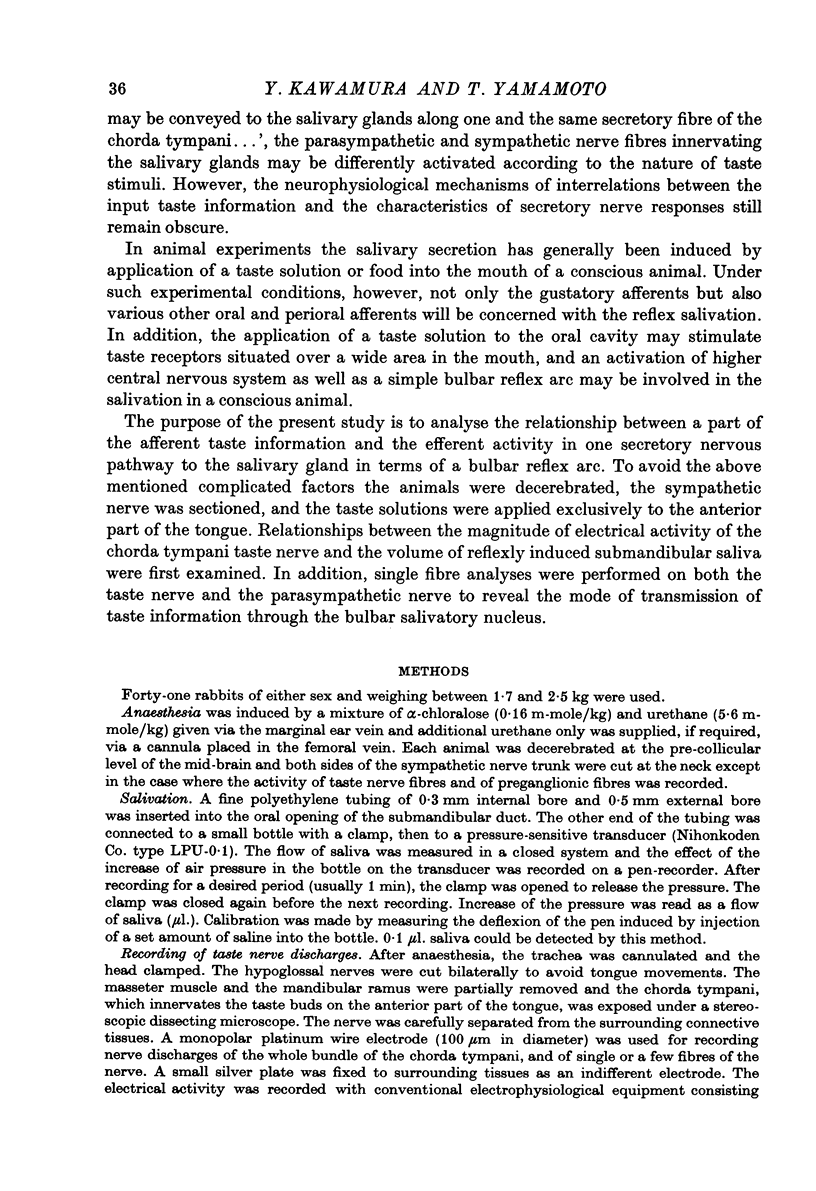
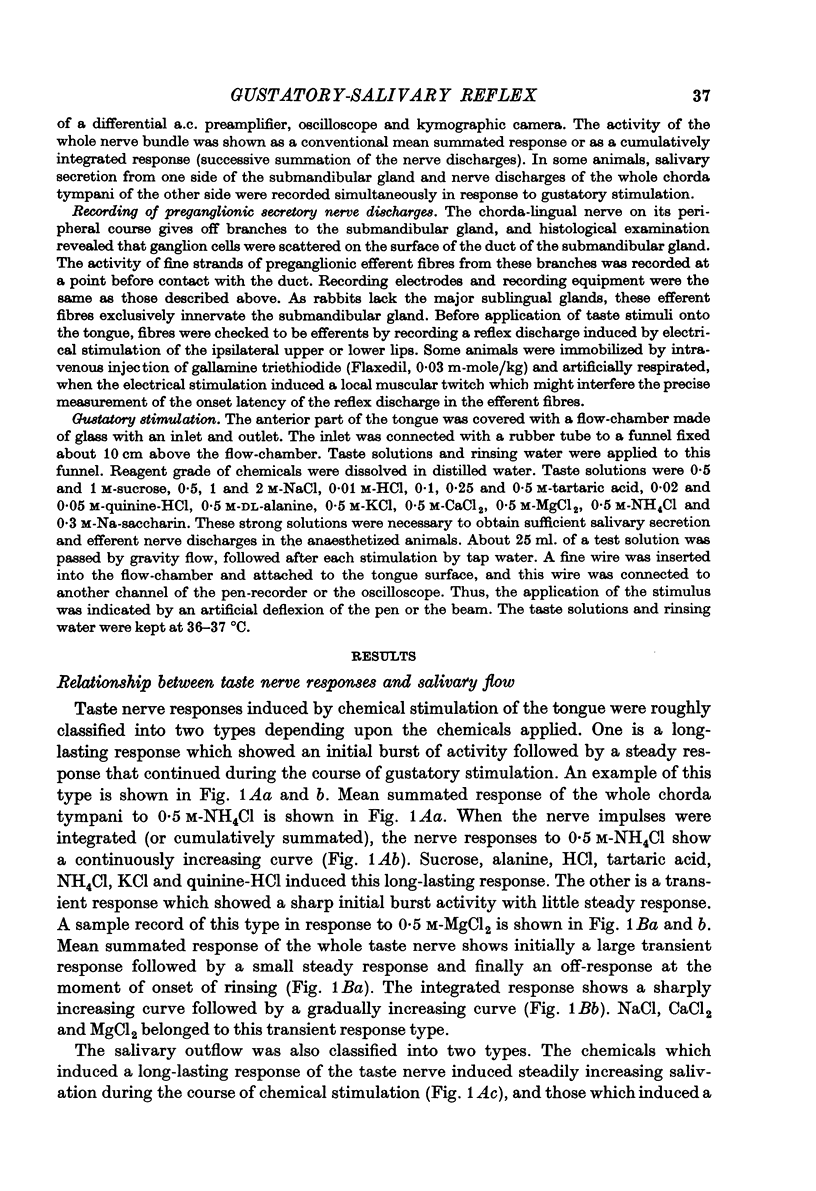
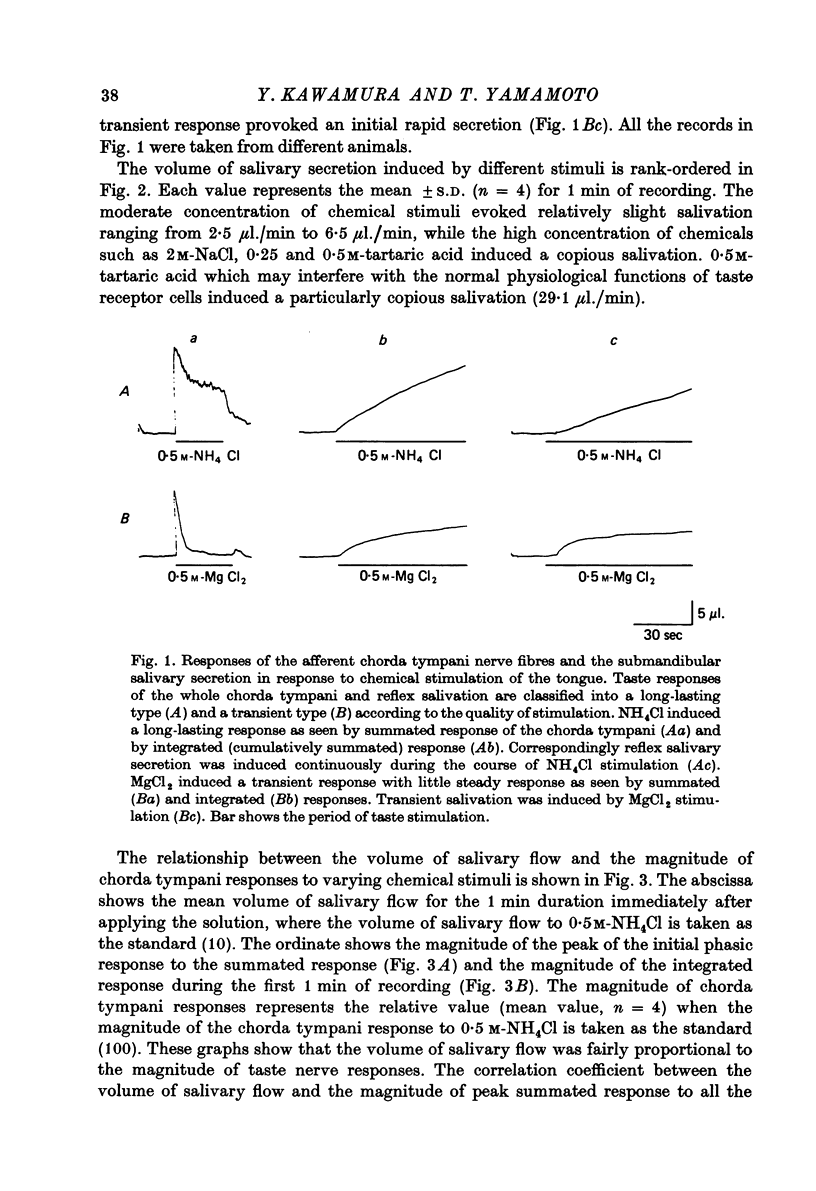
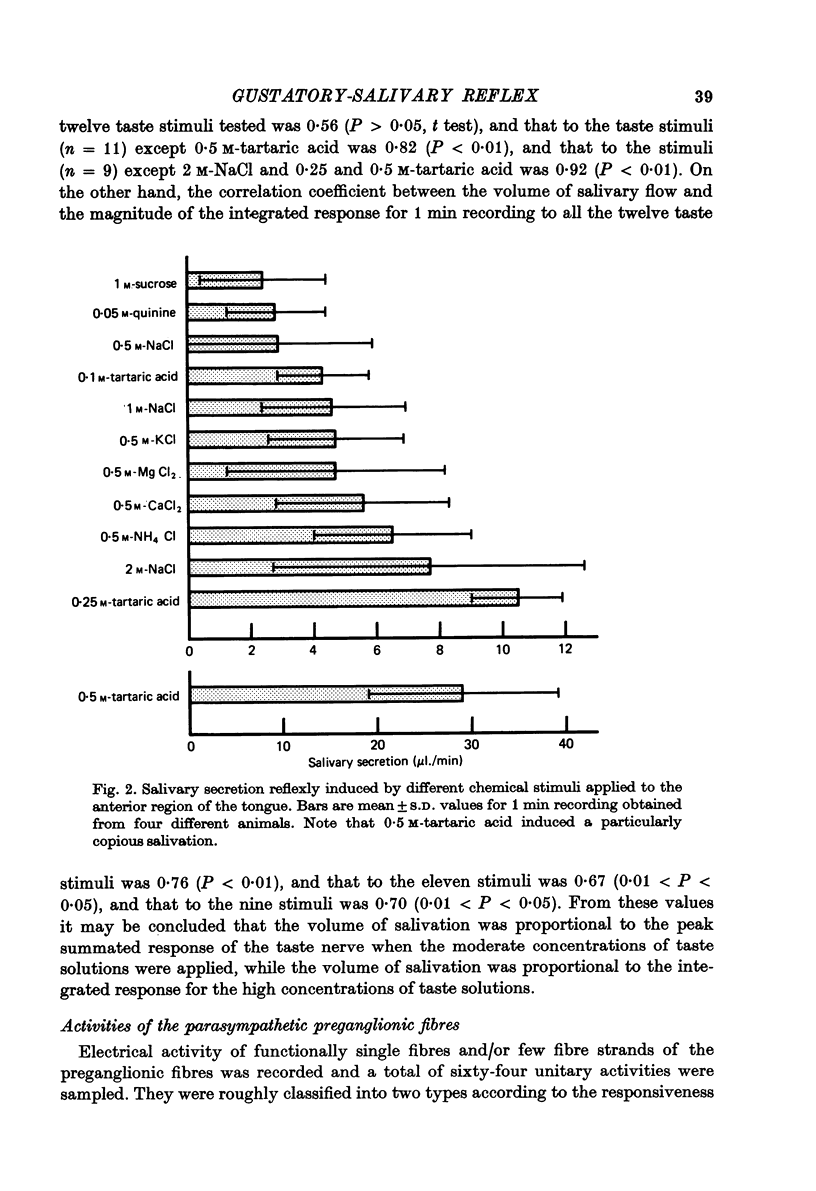

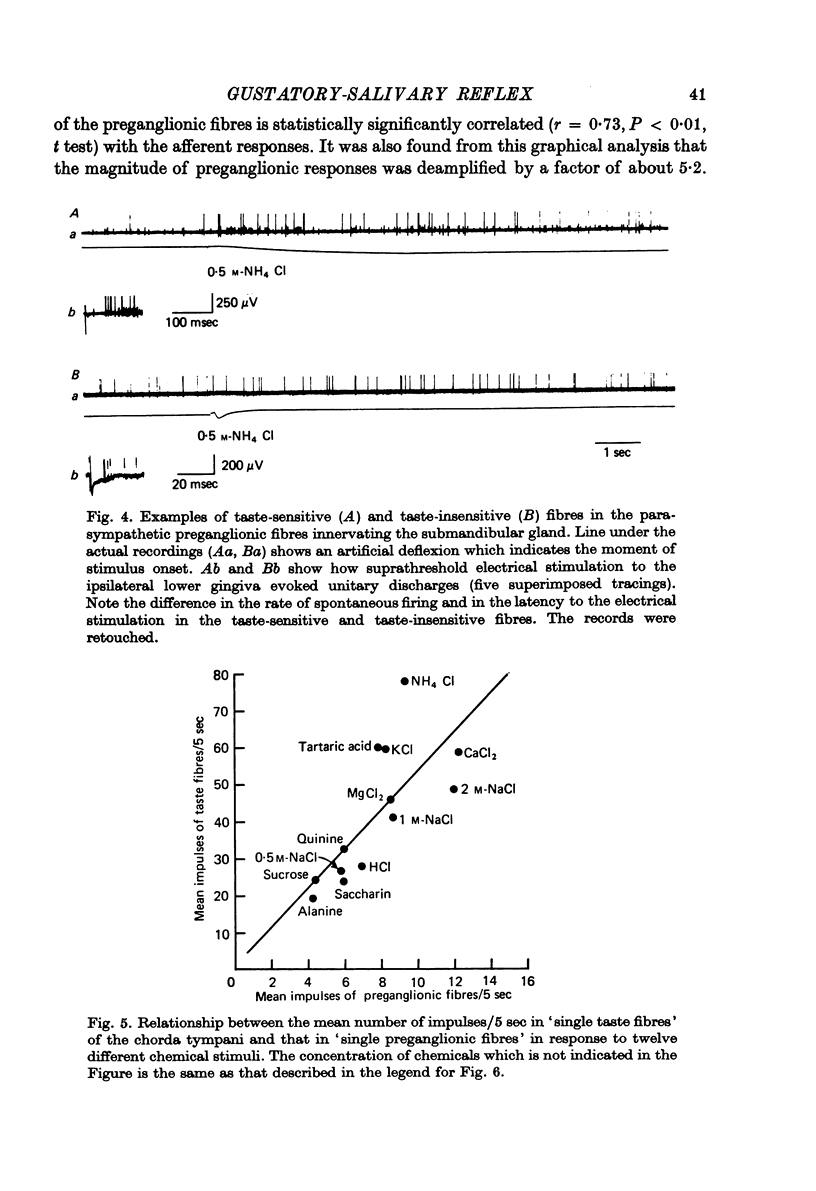
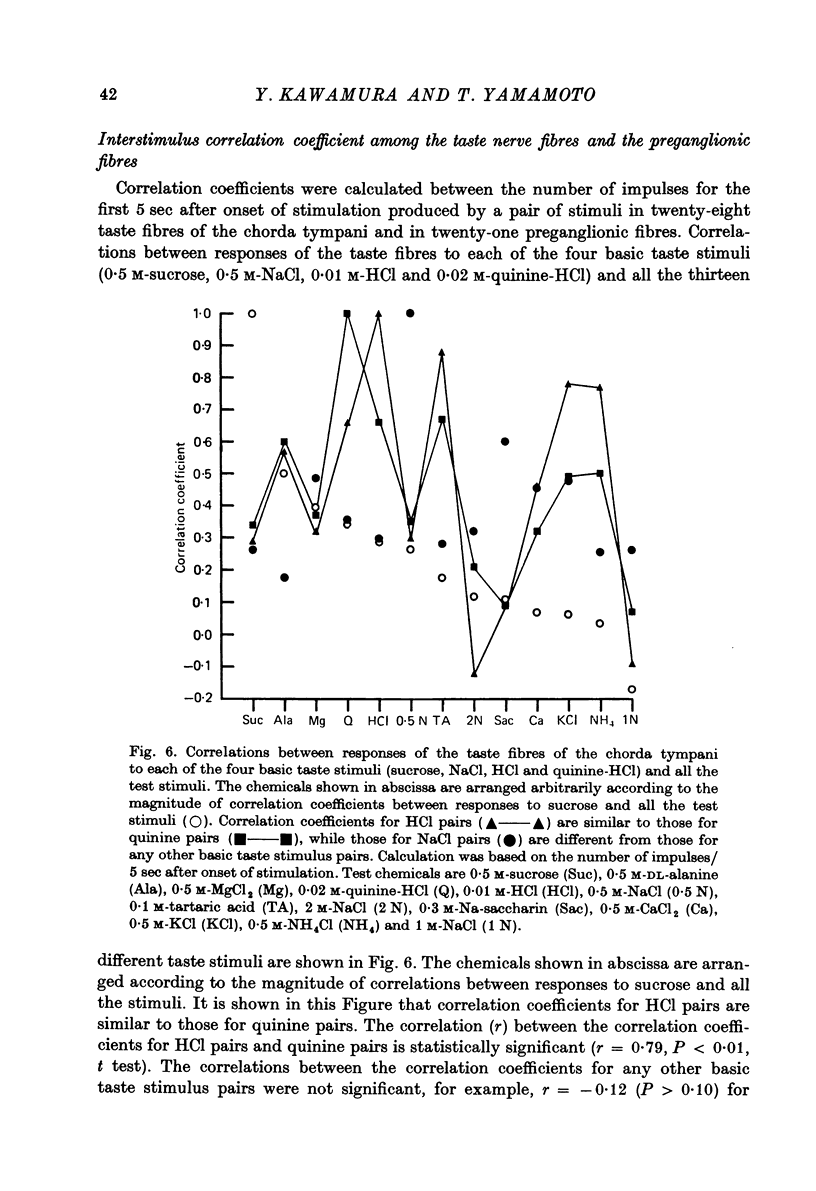
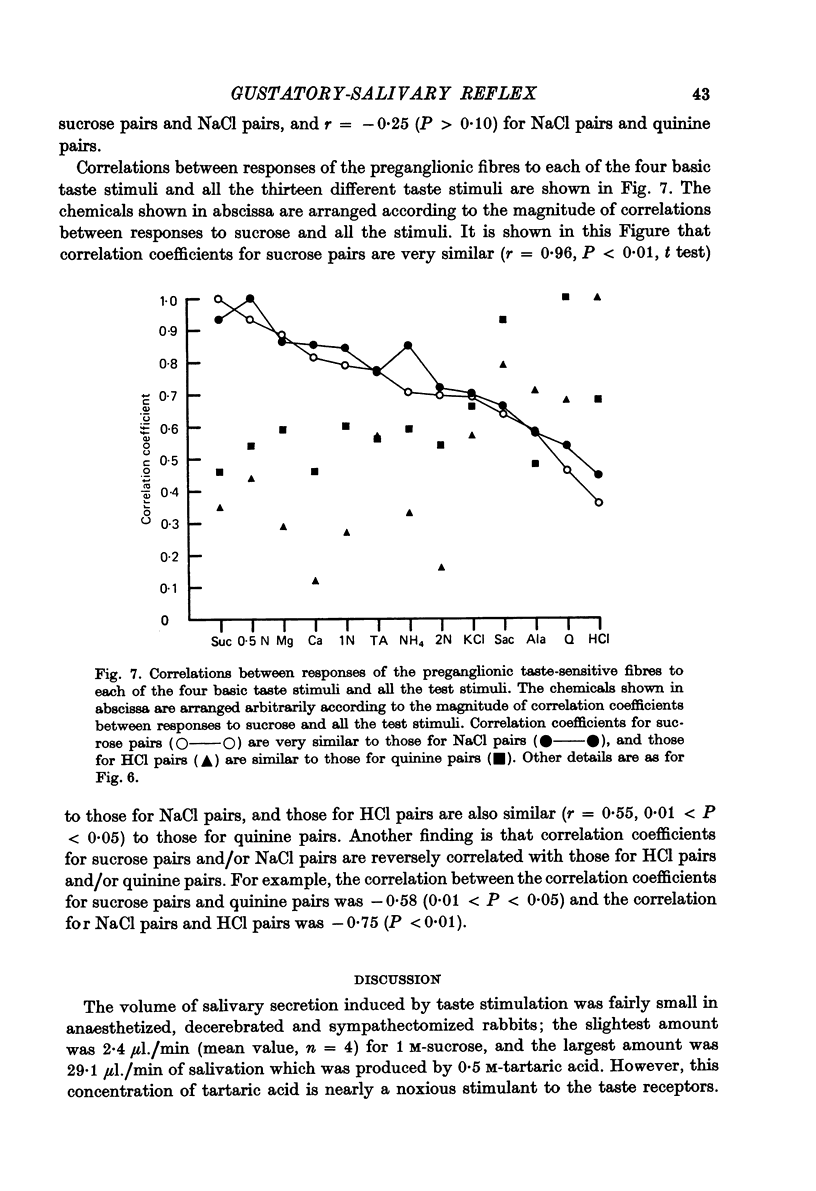
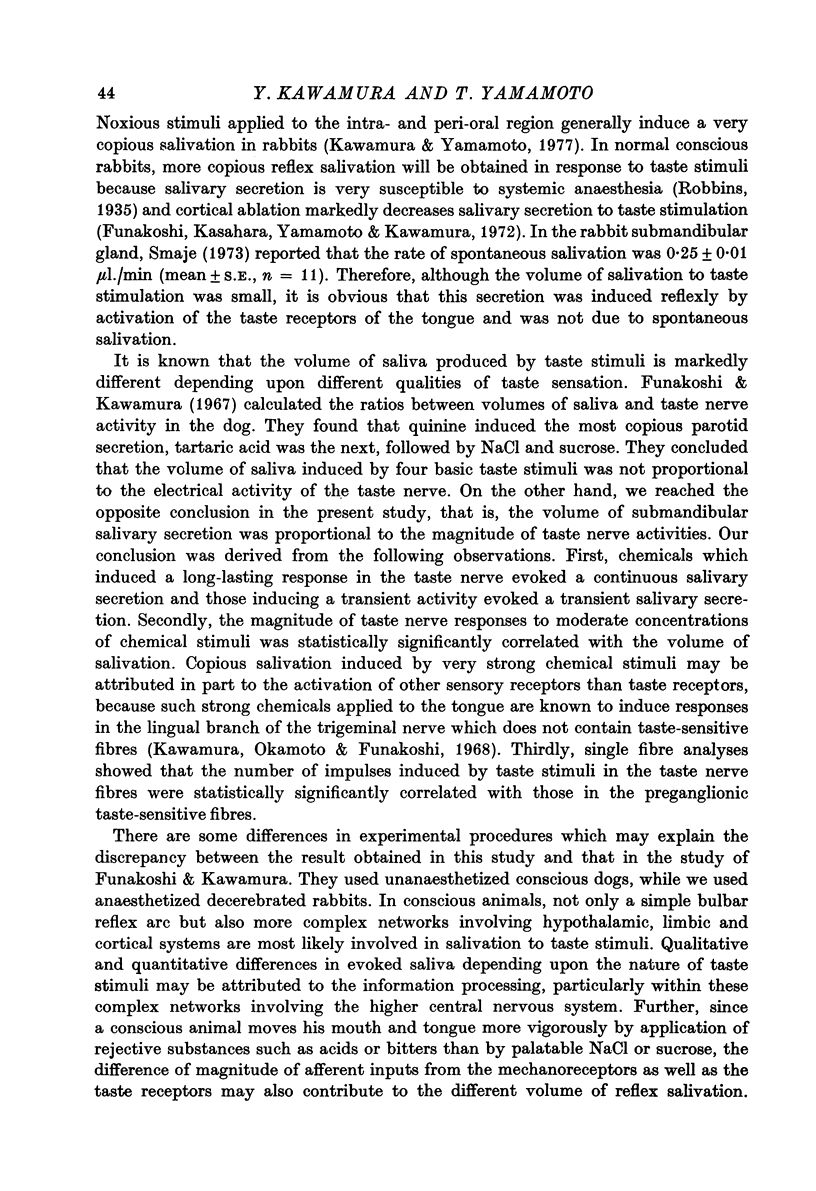
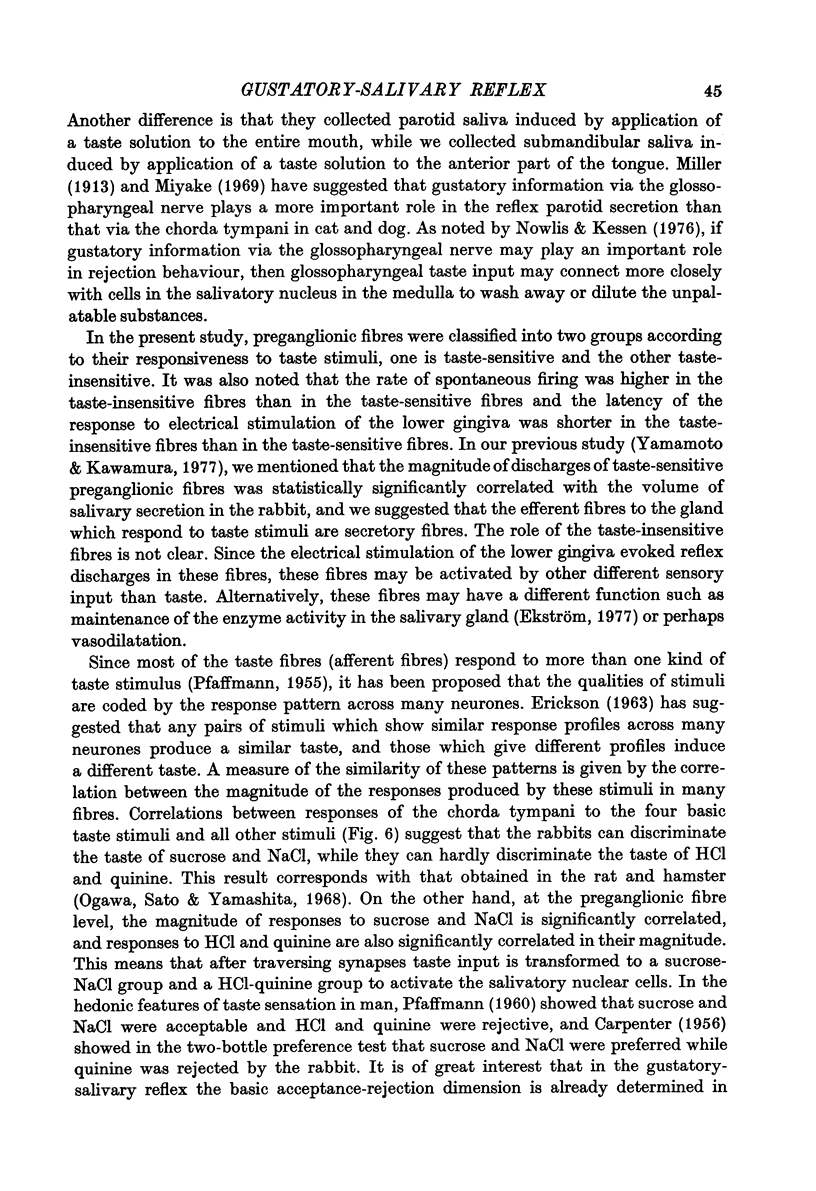
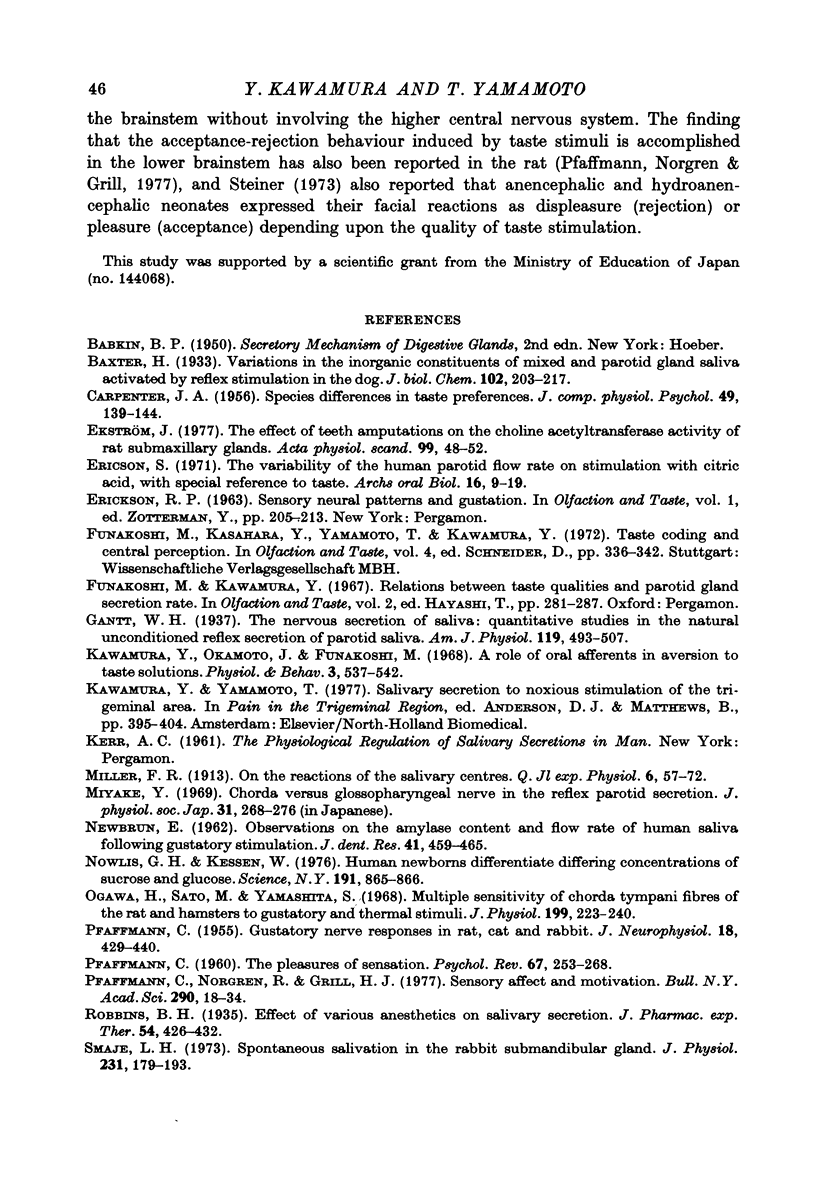
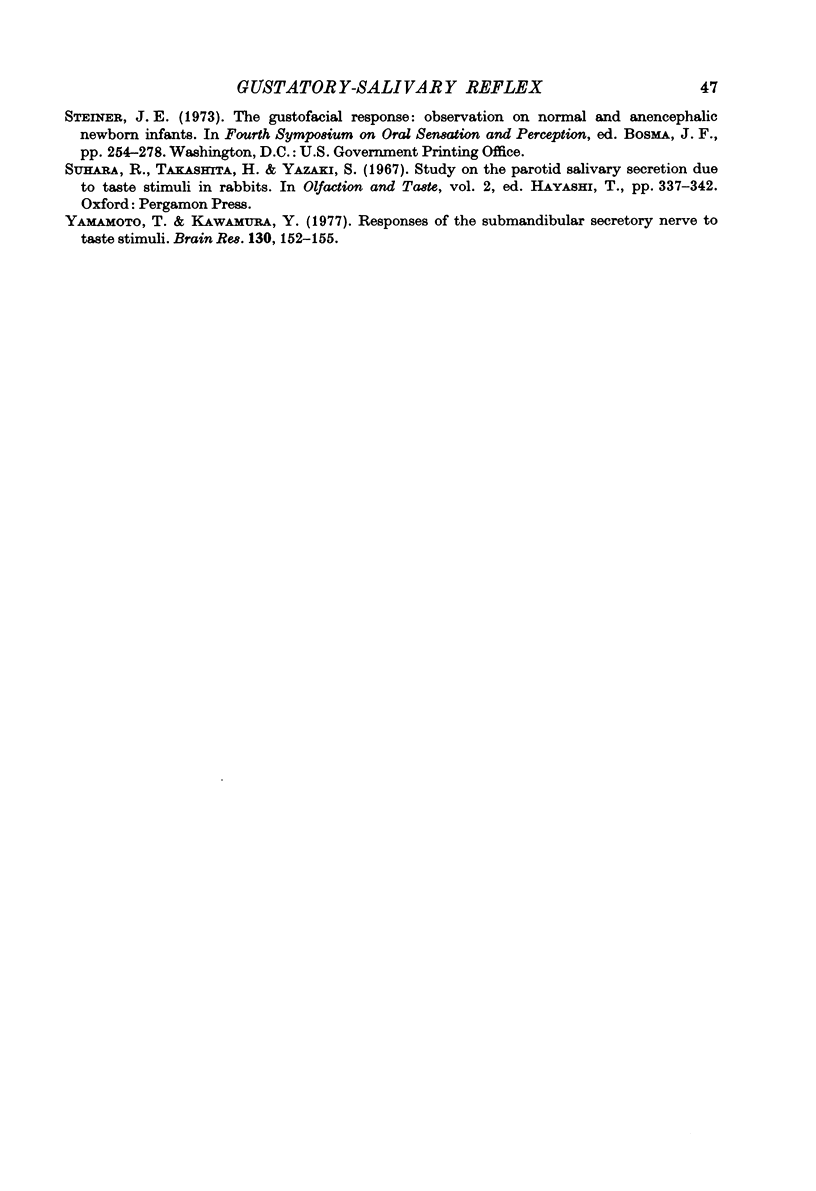
Selected References
These references are in PubMed. This may not be the complete list of references from this article.
- CARPENTER J. A. Species differences in taste preferences. J Comp Physiol Psychol. 1956 Apr;49(2):139–144. doi: 10.1037/h0048407. [DOI] [PubMed] [Google Scholar]
- Ekström J. The effect of teeth amputations on the choline acetyltransferase activity of rat submaxillary glands. Acta Physiol Scand. 1977 Jan;99(1):48–52. doi: 10.1111/j.1748-1716.1977.tb10351.x. [DOI] [PubMed] [Google Scholar]
- Ericson S. The variability of the human parotid flow rate on stimulation with citric acid, with special reference to taste. Arch Oral Biol. 1971 Jan;16(1):9–19. doi: 10.1016/0003-9969(71)90132-4. [DOI] [PubMed] [Google Scholar]
- Nowlis G. H., Kessen W. Human newborns differentiate differing concentrations of sucrose and glucose. Science. 1976 Feb 27;191(4229):865–866. doi: 10.1126/science.1251200. [DOI] [PubMed] [Google Scholar]
- Ogawa H., Sato M., Yamashita S. Multiple sensitivity of chordat typani fibres of the rat and hamster to gustatory and thermal stimuli. J Physiol. 1968 Nov;199(1):223–240. doi: 10.1113/jphysiol.1968.sp008650. [DOI] [PMC free article] [PubMed] [Google Scholar]
- PFAFFMANN C. The pleasures of sensation. Psychol Rev. 1960 Jul;67:253–268. doi: 10.1037/h0045838. [DOI] [PubMed] [Google Scholar]
- Pfaffmann C., Norgren R., Grill H. J. Sensory affect and motivation. Ann N Y Acad Sci. 1977;290:18–34. doi: 10.1111/j.1749-6632.1977.tb39713.x. [DOI] [PubMed] [Google Scholar]
- Steiner J. E. The gustofacial response: observation on normal and anencephalic newborn infants. Symp Oral Sens Percept. 1973;(4):254–278. [PubMed] [Google Scholar]
- Yamamoto T., Kawamura Y. Responses of the submandibular secretory nerve to taste stimuli. Brain Res. 1977 Jul 8;130(1):152–155. doi: 10.1016/0006-8993(77)90851-4. [DOI] [PubMed] [Google Scholar]


